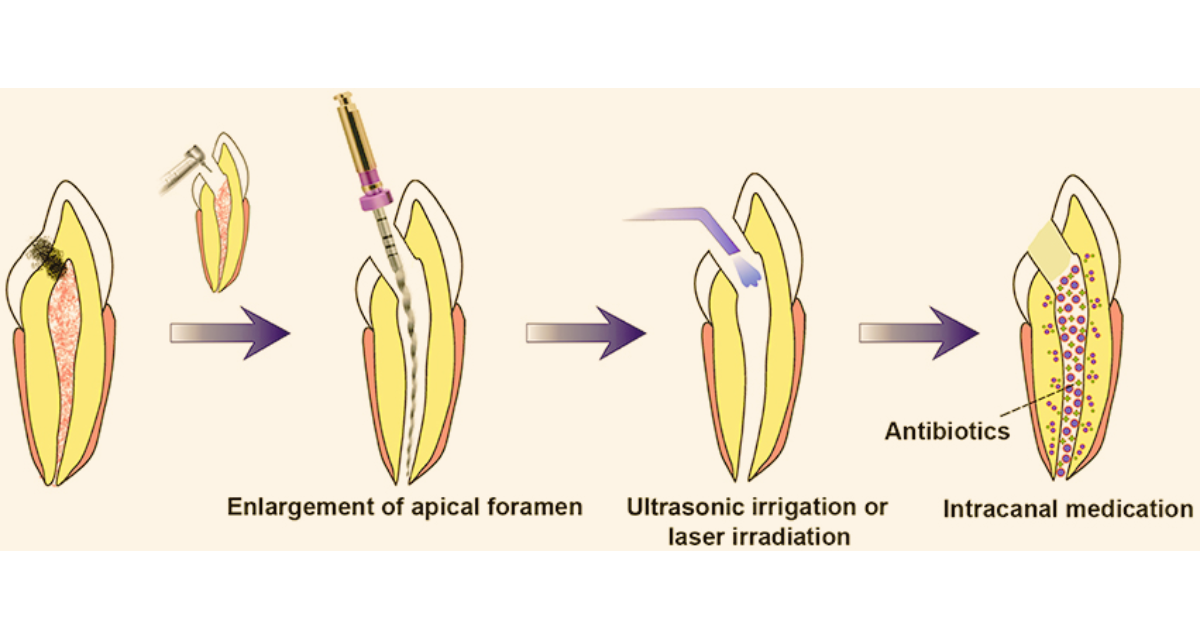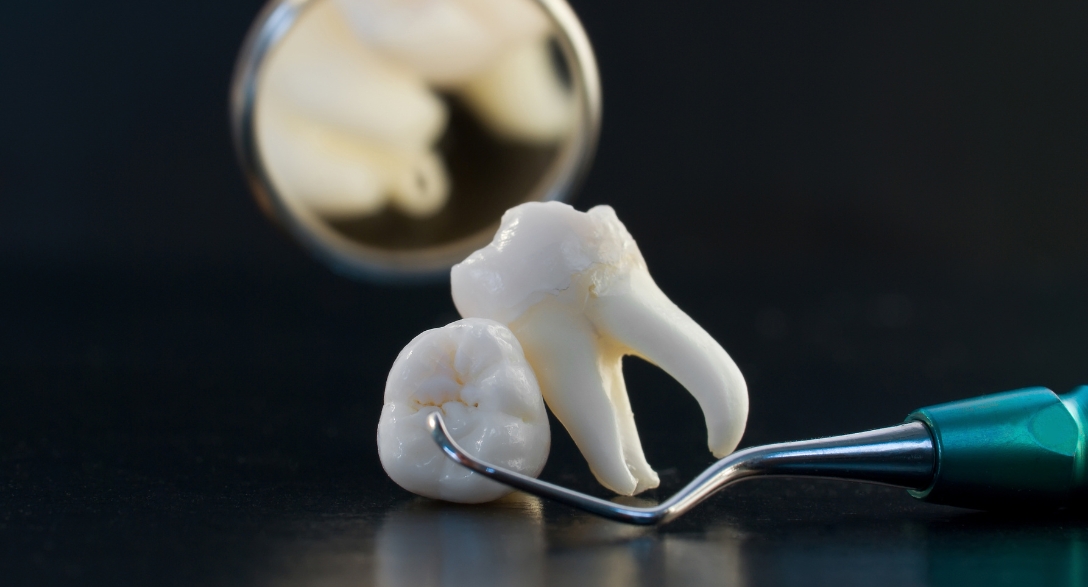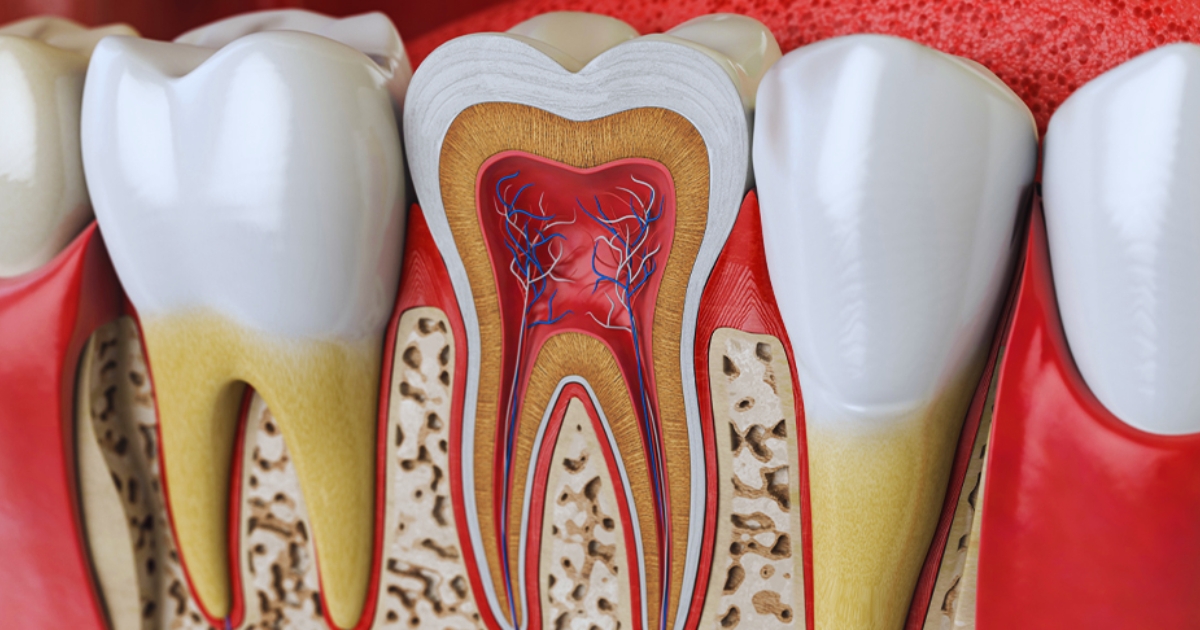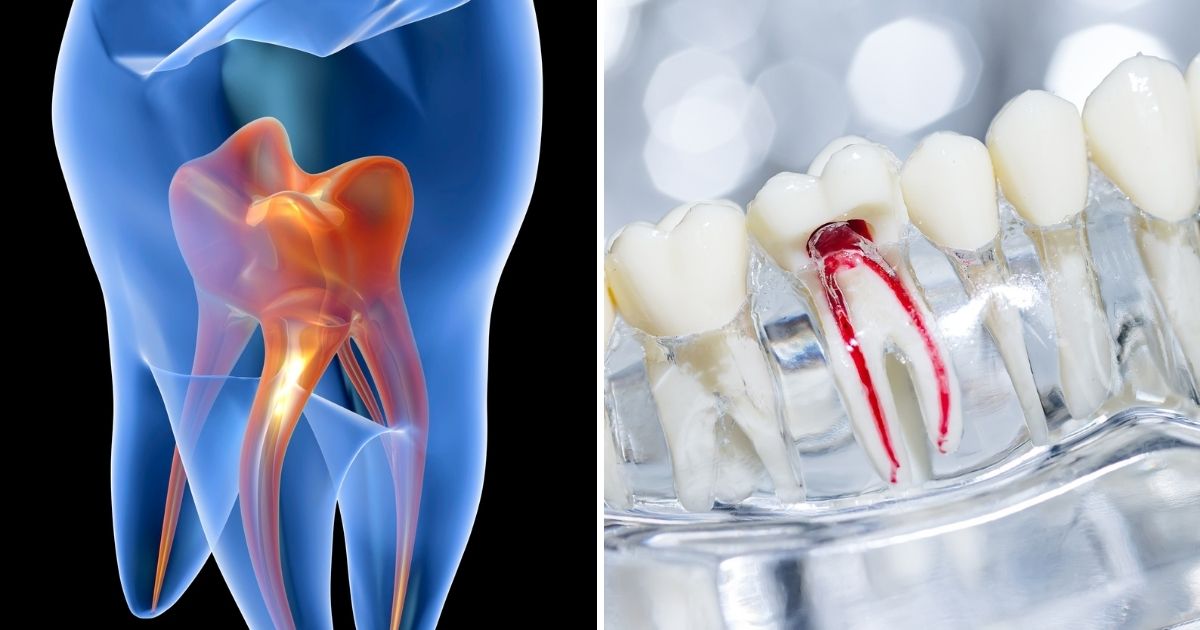Pay Online

Pulp regeneration is an innovative approach in endodontics that aims to restore a tooth’s vitality by regenerating the dental pulp, the tissue inside the tooth that contains nerves and blood vessels. This technique is particularly groundbreaking because it offers a way to save teeth that would otherwise require extraction.
Despite its potential, there are many myths and misconceptions surrounding pulp regeneration. In this blog, we’ll debunk some of these myths and provide clarity on what pulp regeneration truly entails.
Dispelling the Myths: The Real Deal On Pulp Regeneration
Myth 1: Pulp Regeneration is Only for Children
Reality: One of the most common misconceptions about pulp regeneration is that it is a treatment option only suitable for children. While it’s true that younger patients are often the ideal candidates due to their ongoing dental development, adults can also benefit from pulp regeneration.
The suitability of this procedure depends on various factors, including the condition of the tooth, the extent of damage, and the patient’s overall health. Advances in dental science are making it increasingly possible for adults to undergo successful pulp regeneration, provided the right conditions are met.
Myth 2: Pulp Regeneration is Painful
Reality: Many people fear dental procedures due to the anticipated pain, and pulp regeneration is no exception. However, this myth is far from the truth. The procedure is performed under local anesthesia, ensuring that the patient feels no pain during the treatment.
Post-procedure discomfort is usually minimal and can be managed with over-the-counter pain relievers. The process is designed to be as comfortable as possible, with the ultimate goal of eliminating the pain caused by infected or damaged pulp tissue.
Myth 3: Pulp Regeneration is a Quick Fix
Reality: Pulp regeneration is not a quick fix; it is a complex, multi-step procedure that requires time and patience. The process involves multiple visits to the dentist, during which the tooth is thoroughly cleaned, disinfected, and then treated with a combination of materials that stimulate tissue regeneration.
After the procedure, the tooth is monitored over several months to ensure that the pulp tissue is regenerating properly. This careful, step-by-step approach is necessary to achieve successful outcomes and to ensure the long-term health of the tooth.
Myth 4: Pulp Regeneration is Experimental and Unproven
Reality: While pulp regeneration is a relatively new field within endodontics, it is far from experimental or unproven. The technique has been studied extensively and has shown promising results in both clinical trials and real-world applications.
Research in this area is ongoing, with advancements being made regularly, particularly in the materials and methods used to stimulate tissue regeneration. It is important to consult with a knowledgeable dentist who can provide information on the latest developments and determine if pulp regeneration is a viable option for your specific dental needs.
Myth 5: Pulp Regeneration is Risky and Unreliable
Reality: Like any dental procedure, pulp regeneration carries some risks, but it is generally considered safe when performed by a qualified endodontist. The success rate of the procedure depends on a number of variables, such as the degree of damage to the tooth, the patient’s overall health, as well as the proficiency of the dentist carrying out the treatment.
With proper care and follow-up, the risks associated with pulp regeneration are minimal, and the procedure can offer a reliable solution for saving teeth that might otherwise be lost.
Myth 6: Pulp Regeneration Can Replace All Root Canal Treatments
Reality: Pulp regeneration is a valuable addition to the field of endodontics, but it is not a replacement for traditional root canal treatments. In cases where the pulp is severely infected, or the tooth is structurally compromised. A root canal may still be the best option.
Pulp regeneration is most effective in specific scenarios, such as when the tooth’s root system is still developing, or when the damage is not too extensive. Your dentist will assess each situation individually to ascertain the most appropriate treatment option.
Myth 7: The Results of Pulp Regeneration Are Immediate
Reality: Another common misconception is that the results of pulp regeneration are immediate. In reality, the regeneration process takes time. After the initial procedure, it can take several months for new tissue to form and for the tooth to regain vitality. During this period, the tooth will be monitored closely to ensure that the regeneration is progressing as expected. Being patient is essential since the end aim is to restore the tooth’s natural function and vitality over time, rather than seeking an instant solution.
So, Is Pulp Regeneration The Right Pick for You?
For those considering pulp regeneration in Denton, it’s essential to have a clear understanding of what the procedure involves and the potential outcomes. Pulp regeneration offers a revolutionary approach to saving teeth that might otherwise be lost due to damage or decay. By stimulating the growth of new pulp tissue, this treatment can restore a tooth’s vitality. It helps to maintain its natural function.
However, it’s important to note that pulp regeneration is not suitable for every case. The success of the process is dependent on a number of variables. It can be including the tooth’s condition, the age of the patient, and the overall health of the dental structures. Consultation with a highly-trained endodontist in Denton is crucial to determine if pulp regeneration is the right option for you.
Frequently Asked Questions On Pulp Regeneration Myths!
1. Is pulp regeneration only effective for younger patients?
No, while younger patients often benefit due to ongoing dental development. Adults can also be candidates for pulp regeneration depending on the condition of the tooth and other factors.
2. Can pulp regeneration be combined with other dental treatments like orthodontics?
Yes, pulp regeneration can be performed alongside orthodontic treatments, but timing is crucial. Coordination between your endodontist and orthodontist is essential to ensure that the procedures complement each other. It does not interfere with the healing process.
3. Can pulp regeneration improve the strength of a tooth that has been weakened by decay?
Yes, pulp regeneration can help restore vitality and potentially strengthen the tooth by encouraging the growth of new, healthy tissue within the pulp chamber.
4. Are there any dietary restrictions after undergoing pulp regeneration?
Initially, your dentist might recommend avoiding hard or sticky foods that could stress the treated tooth. However, most patients can return to their normal diet after the healing process is complete.
5. Can the regenerated pulp grow beyond the original size of the tooth’s pulp chamber?
No, the regenerated pulp is limited to the original pulp chamber. It will not grow beyond its natural boundaries, ensuring that the tooth maintains its proper structure.





